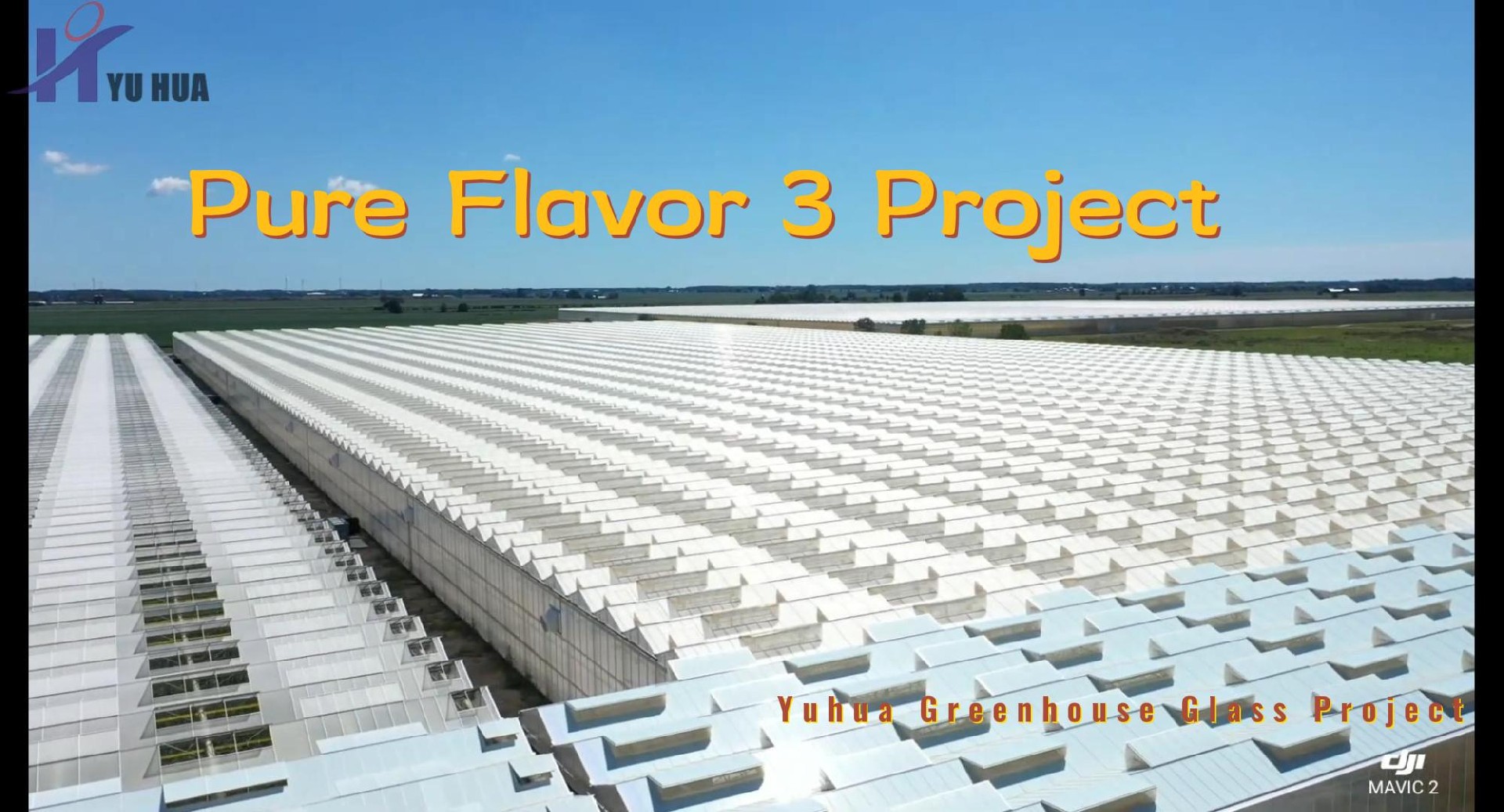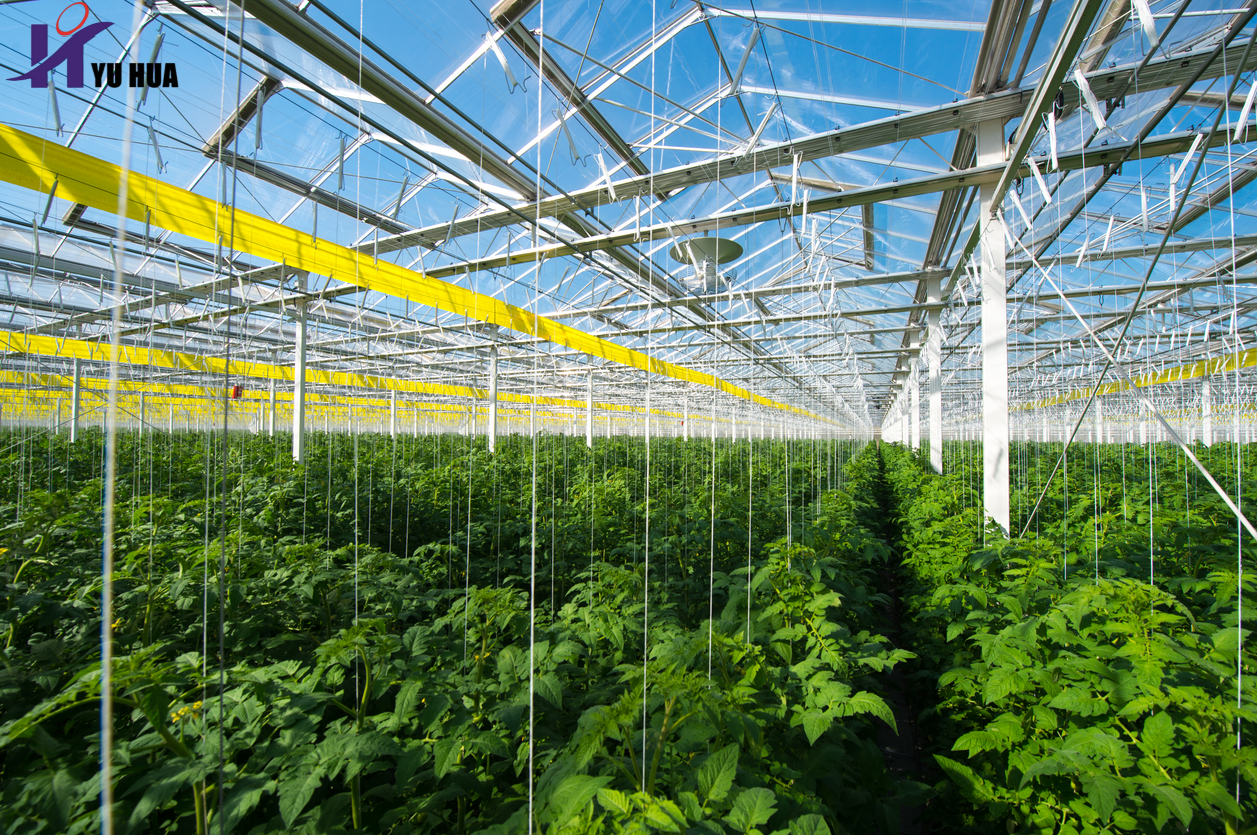
What kind of glass is used in glass greenhouses - two options, generating 30% of greenhouse income
As the crystallization of modern high-end agricultural wisdom, glass greenhouses are not only highly automated, high-yield, green, but also crystal clear in appearance. They are a first-class choice for commercial planting, basic seedling breeding, scientific research, tea restaurants, or entertainment tours.

There are only two types of glass to choose for a glass greenhouse, one is scattering glass and the other is anti-reflective glass;
One is scattering glass
Scattering glass is a product made from ultra-white float glass through a special roller embossing process. Different rollers can produce products with different haze specifications.
The haze specifications of scattering glass are divided into: 5, 10, 20, 30, 40, 50, 70, 75. [The size of the haze is different, and the amount of light scattered through the glass is different. For planting different crops, you can choose products with different haze specifications];
The thickness specifications of scattering glass commonly used in greenhouses are 4mm and 5mm, the light transmittance standard is 91.5%, the self-explosion rate is two thousandths, and the number of self-explosion particles is 50*50mm ≥60 particles.
The second is anti-reflective glass
Anti-reflective glass is based on scattering glass and is double-sided coated through an etching process. The light transmittance of the glass has been increased from 91.5% to 98.5% (currently the highest light transmittance in the industry).
Anti-reflective glass etching process coating is different from other coating processes. The coating layer of anti-reflective glass is integrated with the glass and has the characteristics of corrosion resistance and cleaning resistance. As long as the glass is not damaged, the film layer is permanently effective and the light transmittance will not change. reduce.
The anti-reflective glass is hydrophilic after being coated. In the greenhouse with high temperature and high humidity, the water droplets condensed on the top glass of the greenhouse will not drip, but will slide along the glass surface, which can effectively prevent the water droplets from damaging the crops. , thereby effectively increasing production capacity.
Based on the conclusions drawn from many experimental greenhouses such as kubo, Bom, Havecon, Wageningen University, etc. Compared with other glass-covered greenhouses, anti-reflective glass greenhouses can effectively increase the total production capacity by more than 30%. For greenhouses such as lettuce and strawberries, the maturity period is effectively shortened by about 2 weeks, and the crops are of better quality and taste better.

There are two options for glass greenhouses, one is ultra-white scattering tempered glass, and the other is ultra-white tempered anti-reflective glass;
First recommendation: ultra-white tempered anti-reflective glass, with higher light transmittance and higher planting efficiency. Secondly, you can choose ultra-white tempered scattering glass. Other types of glass, which do not empower greenhouse cultivation, can be used, but are not recommended.
Tags:anti-reflective glass diffuse glass agricultural greenhouses glass greenhouse venlo greenhouse AR glass greenhouses glass agricultural glass horticultural glass #greenhouseglass #Antireflectiveglass #Diffusetemperedglass #Ultrawhitefloatglass #agriculturalgreenhouseglass #diffuseglass #horticulturalglass #Tomatogreenhouse #Coloredpeppergreenhouse #Lettucegreenhouse #Agriculturalgreenhouse #ARglass #venlogreenhouse #greenhouseglass #Antireflectiveglass #Diffusetemperedglass #Ultrawhitefloatglass #agriculturalgreenhouseglass #diffuseglass #horticulturalglass #Tomatogreenhouse #Coloredpeppergreenhouse #Lettucegreenhouse #Agriculturalgreenhouse #ARglass #venlogreenhouse #GlassManufacturer #invernadero #ArchitecturalGlass #ClearFloatGlass #FloatGlass
Previous:Do we know the advantages and differences of glass greenhouses?
Next:The biggest difference between glass and plastic for greenhouses is not the price, but the productio



















